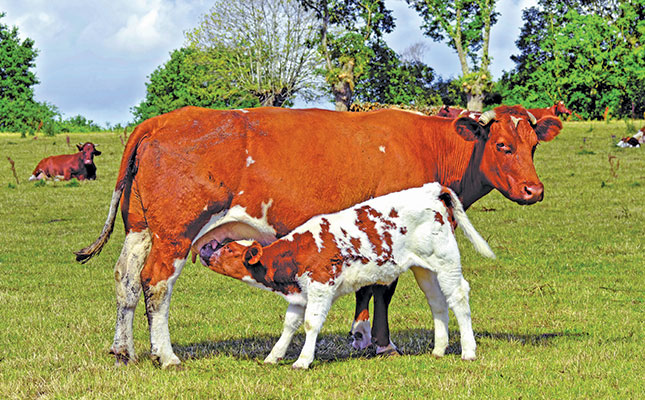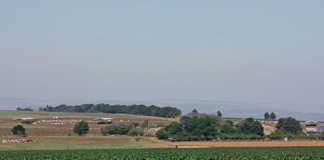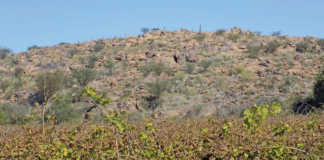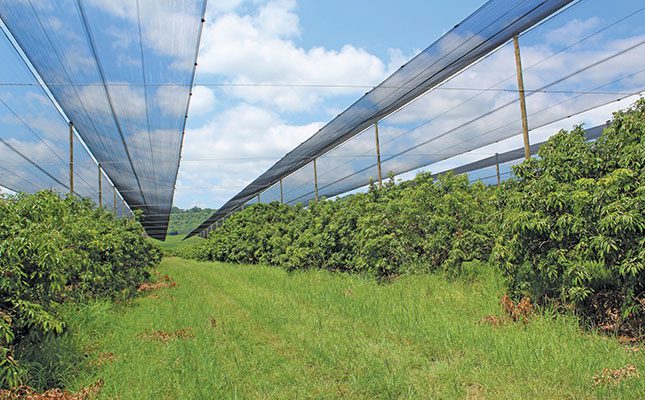
Photo: Lindi Botha
The refreshingly sweet nectar of litchis is a delectable part of December festivities. But the fruit is increasingly leaving a bitter taste in farmers’ mouths.
A tricky crop to manage at the best of times, volatile weather has been wreaking havoc on yields over the last few years, not to mention age-old challenges with markets.
André Schoeman, owner of Laughing Waters litchi farm in Malelane, Mpumalanga, however still believes in the crop and its potential to provide a living.
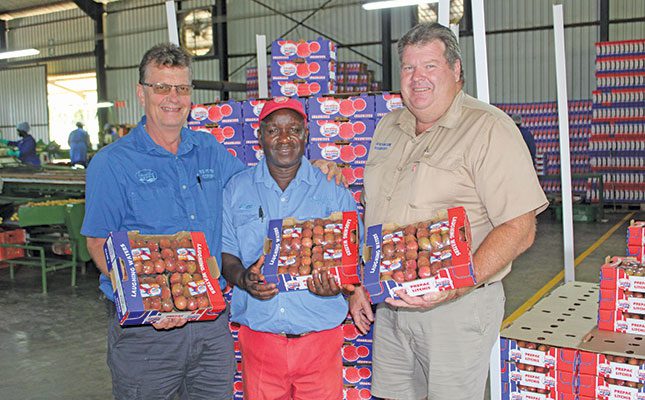
“It’s a very rewarding crop when you get it right. But there are many dominoes that need to fall in place for you to capitalise on the crop. And many of those dominoes are not in a farmer’s control, like the weather.”
After attending university, Schoeman returned to the family litchi farm, managing 630ha.
This was gradually expanded to 130ha, but soon afterwards, the larger part of the farm was sold, and Schoeman then purchased a section of the farm to independently continue his passion for litchi production.
There were 15ha of litchis initially, which he expanded to the 65ha he farms today.
Blowing hot and cold
With market timing being a crucial factor in litchi profitability, the three cultivars planted on the Bekfontein farm run from early to mid-season varieties.
This includes Third Month Red, Early Delight and Mauritius. The latter’s harvest concludes around mid-December. The past season provided a textbook case for the challenges farmers will face if weather conditions play up in spring.
The litchis ripened later than usual as a result of the winter stretching towards September, and more cold snaps in October. This caused the trees to flower later than usual, and when fruit started appearing, heatwaves struck.
“Initially the harvest looked very promising,” says Schoeman. “But then heatwaves in November, with temperatures soaring above 40°C for 10 days, damaged the crop.
At these temperatures nothing can be done to mitigate the damage. The trees shut down as soon as the temperature goes above 36°C, focusing all their energy on surviving and not expending any resources on fruit. So the fruit does not develop.
“Exacerbating the problem was the fact that the crop was already late due to the cold, so when the heat arrived it was at a critical time for the hanging fruit to fully develop, which then didn’t happen.”
This meant all the fruit did not reach optimal size, which precludes it from the export market, impacting income. But whether this is a sign of climate change, and more troubles to come, Schoeman is uncertain.
“I think we had a year of very volatile climatic conditions; it was very hot and very cold. It is uncommon to have a heatwave of such high temperatures, lasting for that long at that time of the year. Litchis can handle two or three days of such heat, but not more. It was the first time in many years that we had such high temperatures for such a long time.
We’ve seen these peaks before, but not for such a sustained period. There have been years when the whole harvest burst from heat , but that was 20 years ago. My father relates how 50 years ago his shoes would grow mould in the cupboard because of a lot of rain and high humidity. This year we are seeing the same, so I can’t say if it is climate change, or just normal weather patterns.”
If climate change is an issue, then litchis’ sensitivity to weather could be its downfall. Bekfontein does, however, offer benefits in terms of location, which shields the crop from other weather extremes faced by farmers in the Onderberg: the hot Selati winds.
These blow across the Kruger National Park from the north towards the south, often burning fruit on the trees. The mountain range on the northern side of Bekfontein mostly stops this wind.
“When temperatures peak and you have the Selati wind, it is a divesting combination for litchis. The skin bursts and if everything can’t be harvested in time to be sent for juicing, it all goes to waste.”
The farm is however not without its limitations. With a borehole as his only source of water (unlike most farms in the Onderberg that receive water from an irrigation scheme), Schoeman can only produce as much fruit as his water allows.
Any further development is evaluated on the dependency of water, which impacts alternative crop selection and litchi orchard expansion.
After extensive research, Schoeman decided to diversify with macadamias, which requires far less water than many other crops, such as sugar cane.
Early indications show positive signs of sustainable macadamia production, however it is still largely untested over the long term in this area.
The orchard is three years old, with still another two years to go before the first few nuts can be harvested.
While Schoeman notes that the macadamia market has taken a knock in terms of price over the last two years, he does not believe it to be a long-term problem.
“The industry has sufficient knowledge to weather the storm, and nut consumption globally is increasing. Nuts have an added advantage over fresh produce in that they have a longer shelf life so are better hedged against logistics constraints.”
Timing is everything
For an optimal crop, timing is especially important in litchi production. Schoeman likens it to stacked dominoes that all need to fall in place for the whole operation to come together.
An agricultural professor once posed the question to Schoeman whether it is more prudent to be cost effective, or to be on time. The answer is to be on time.
Schoeman explains that this is a decision that is often difficult to make for producers, because being on time can mean not being cost effective.
“But if you are not on time, you can’t be cost effective because you would have missed the boat. That which needs to happen, needs to be done at the right time, or all efforts can come to naught.”
For an optimal crop, timing is especially important in litchi production. Schoeman likens it to stacked dominoes that all need to fall in place for the whole operation to come together.
“While many see litchis as a December crop, it is a 365 days a year operation. There are critical things that need to be done during the year to ensure a good harvest and which require a high level of technical input.
“It’s the right fertiliser, managing the orchards in a particular year according to the particular climatic conditions, when water must be given, and withheld.
“Certain times of the year you want the tree to produce a leaf flush, other times to go into dormancy so that it can build up energy reserves to push out a good crop.
“The timing of all of this is very much gleaned through experience. It’s a tree that is difficult to manipulate, but that you very much do need to manipulate to get the desired outcome.”
An uncontrollable domino that must fall in place for litchi success is a sufficient number of cold days in late autumn.
“There is nothing that can induce flowering in litchis quite like cold.
“If the cold comes too late, the trees flower too late and the crop becomes vulnerable to heat later in the year when the fruit is not ready to handle it just yet.
“If the heat arrives three weeks before the fruit starts to colour, the fruit are more resilient towards the heat. It’s not sunburn as much as it is heat burn – the litchis will burn right around the fruit, not just on the side facing the sun.”
Crucial to heat management is ensuring the trees have enough water. Schoeman uses tensiometers in the orchards to measure soil moisture and activate irrigation accordingly.
But with load-shedding being all too present, a generator is used to keep the tensiometer reports coming in and irrigation running. This has added to the cost of production.
Despite the challenges, Bekfontein delivered an industry average of 8t/ha last year.
Yields can go as high as 12t/ha on the farm, especially when the alternate-bearing Third Month Red has an ‘on’ year, which is due in 2024.
Despite its yield volatility, Third Month Red earns its place on the farm by providing a harvest in October, when the market is still empty.
The Onderberg region in Malelane is an early-harvest area, so it is important to capitalise on this unique window in the market to achieve higher prices.
Once the other production areas start entering the market in mid-December, prices start dropping.
The Early Delights follow Third Month Red, providing a crop in November, followed by Mauritius, whose harvest usually concludes at the start of December.
To maintain optimal quality, Schoeman focuses on getting the fruit from the orchard into the packhouse in under two hours.
For this reason, he uses a bakkie to make quick trips with smaller loads between the orchard and the packhouse, rather than a tractor with a large trailer that could carry a bigger load, but which would prolong the process.
With litchis requiring picking by hand, Bekfontein’s labour component soars from 25 permanent staff to nearly 300 seasonal workers, which benefits the local community.
The market conundrum
Around 66% of Schoeman’s crop is exported. He believes that this is the only marketing channel that makes sense financially. Produce is sent to various markets, including the US and the Far East.
Developing new markets is a key focus of the Litchi Growers’ Association in South Africa, which has set its sights on India as a new potential market.
Consumers there are familiar with litchis, so market development does not need to be done. South Africa’s harvest would be counter-seasonal to the India crop, creating a lucrative gap in the market.
Work on opening the market is ongoing, but Schoeman notes that it is a long and complicated process to get all the trade agreements in place.
“South Africa’s protocols for export are all in place so we hope the process will be expedited to allow access,” he says.
As much as 30% of Schoeman’s crop had to be sent for juicing last year as a result of the heat that impacted quality.
This is up from the 10% that is usually earmarked for juicing. The rest of the crop is sent to local markets, which includes municipal markets and directly to supermarkets.
Pricing is determined by various factors including quality, size, colour and importantly, the demand versus supply of the market.
This has led to Schoeman focusing on building Laughing Waters as a brand that supplies quality fruit. He adds:
“I believe there is value in building a brand for consumers to build market trust through adherence to a strict quality standard across the production.
“This is further evident from having a specific market for my Laughing Water branded pre-packs, which is an export-quality litchi sold on the local market.”
Farming litchis has been a life-long passion for Schoeman, and while many of the factors for success are out of his control, the sustainability of his operation lies in the meticulous management of everyday processes.
As the South African litchi industry grows its market presence worldwide, Schoeman is ready to supply quality fruit.
Email André Schoeman at [email protected].








